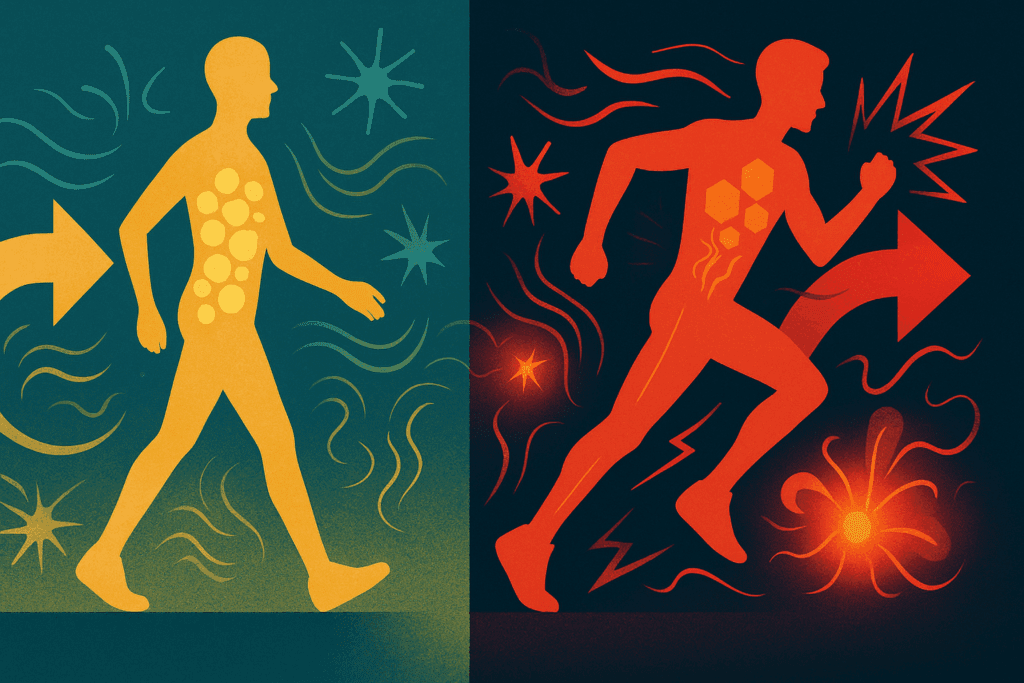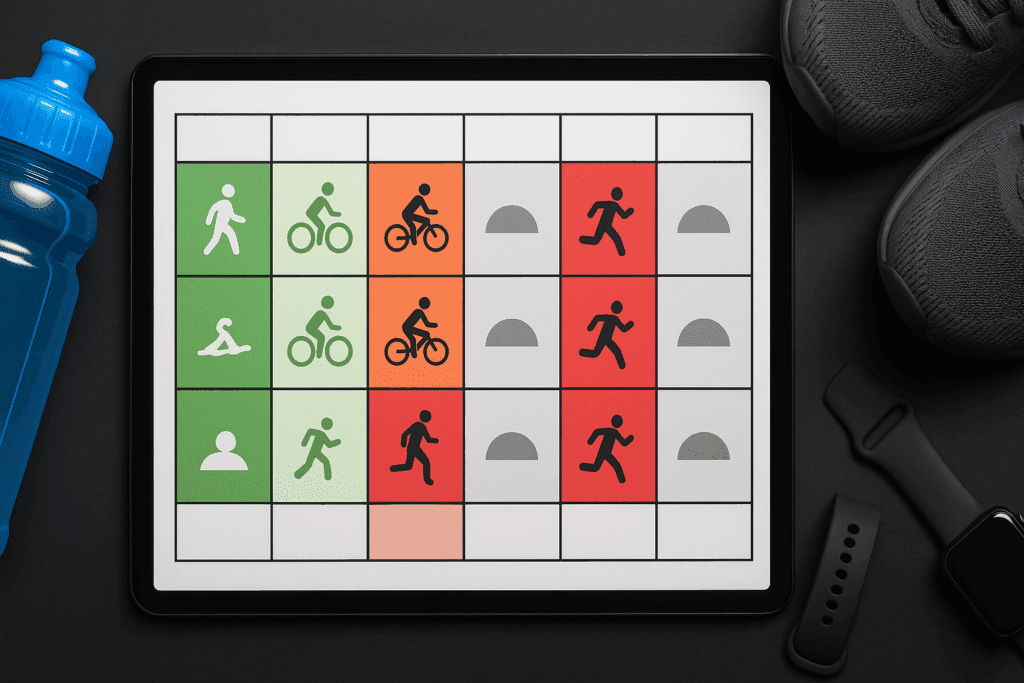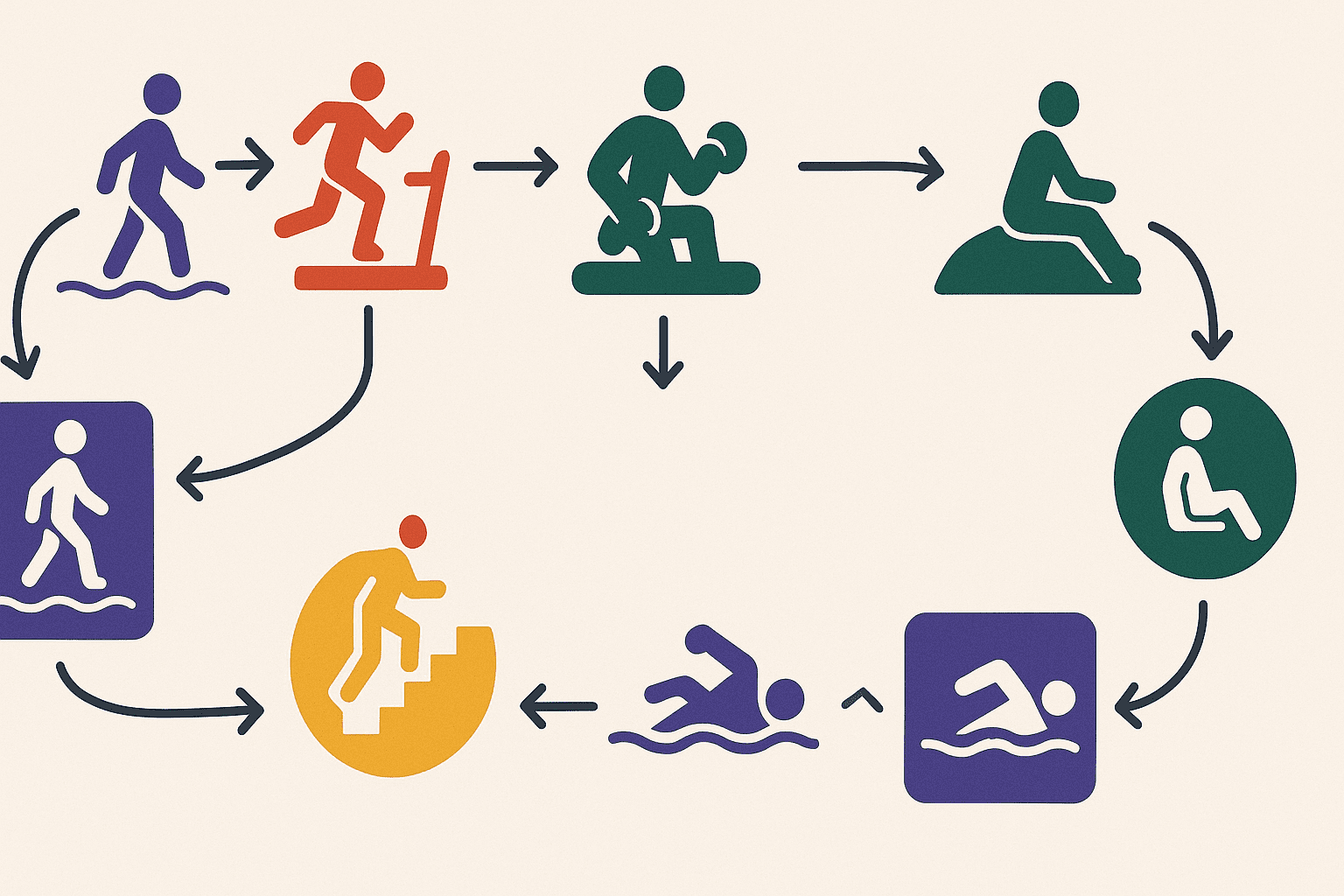Why Cardio Still Matters in Weight Loss Today
In the age of quick fixes and fad diets, many people searching for sustainable weight loss still find themselves asking the same foundational question: how much cardio to lose weight effectively? The answer isn’t as simple as picking a number of minutes and jumping on a treadmill. Weight loss through cardiovascular exercise requires an informed understanding of energy balance, body composition, and how different intensities and modalities of movement influence fat metabolism. Cardio remains a crucial pillar in any fat loss program, but its effectiveness depends on how smartly it’s applied—especially when balanced with strength training, nutrition, and recovery.
It’s also important to recognize that cardio doesn’t just contribute to the number on the scale. It helps improve heart health, boosts endurance, regulates mood, and elevates metabolic rate. The best cardio for weight loss isn’t a punishment—it’s a strategy. From brisk walks to high-intensity circuits, your success with cardio for fat loss depends on how well it aligns with your lifestyle, fitness level, and goals. So instead of asking whether cardio burns fat—which it does—ask which methods work best for your body, and how often you should be using them.
You may also like: Smart Nutrition Choices for a Healthier Lifestyle: What to Know About Whole Grain Rice and Whole Wheat Rice

Does Cardio Burn Fat—and How Does It Work?
The question “does cardio burn fat?” is one of the most common in the fitness space. The short answer is yes, but the explanation involves a deeper look at how the body accesses energy. During cardiovascular exercise, the body uses a mix of carbohydrates and fat to fuel movement. At lower intensities, it leans more heavily on fat as a fuel source. At higher intensities, it shifts to using glycogen from carbohydrates. However, higher-intensity work often results in greater total calorie expenditure, which supports fat loss overall—even if carbs are the primary energy source during the session.
This is why both steady-state cardio and high-intensity interval training (HIIT) are beneficial. They burn calories, increase insulin sensitivity, and improve the body’s ability to oxidize fat. It’s not just about what’s burned during the session, but also how these workouts influence metabolism after the workout ends. Known as the “afterburn effect” or EPOC (Excess Post-Exercise Oxygen Consumption), your body continues burning calories long after a vigorous session. This metabolic uptick makes cardio a potent tool in any fat loss strategy, especially when paired with proper nutrition.

How Much Cardio Per Week to Lose Weight Effectively?
When planning your weekly workout schedule, it’s vital to know how much cardio per week to lose weight effectively without causing fatigue or muscle loss. According to health guidelines, a baseline of 150 minutes of moderate-intensity cardio or 75 minutes of high-intensity cardio per week supports general health. However, for weight loss, most individuals benefit from increasing that to 250–300 minutes per week of moderate activity—or about 40–60 minutes most days of the week.
That might sound like a lot, but it doesn’t have to happen all at once. Splitting sessions into manageable blocks—like a 30-minute morning walk and a 30-minute evening bike ride—can make the time commitment more feasible. It’s also more important to consider how your body is responding to cardio. If you feel constantly fatigued or are losing muscle, you may need to cut back or increase recovery. Ultimately, how much cardio for weight loss works best depends on the quality of your movement, your nutrition, and your personal physiology.

Best Cardio Exercises for Weight Loss: What Actually Works?
If your goal is fat loss, the best cardio exercises for weight loss will involve full-body engagement, elevated heart rate, and movement that you can repeat consistently. Running, cycling, rowing, swimming, and jump rope are all highly effective. These activities engage large muscle groups and keep the heart rate elevated—both important components for maximizing caloric expenditure and metabolic stimulation.
For time efficiency and metabolic impact, many experts recommend high-intensity interval training as one of the best cardio for fat loss methods. By alternating between periods of intense effort and recovery, HIIT workouts not only torch calories during the session but also boost fat burning for hours afterward. But intensity isn’t everything. For those with joint concerns or beginner fitness levels, brisk walking, elliptical training, or water aerobics may be the best aerobic exercise for fat loss. The key is finding an activity you enjoy and can sustain. Cardio workouts for weight loss don’t have to be extreme—they just need to be consistent.

What Cardio Burns the Most Fat?
Among all the options, what cardio burns the most fat? While there’s no single “best” answer, certain forms stand out due to their ability to maximize caloric output and trigger fat oxidation. HIIT workouts are among the top contenders thanks to their high intensity and extended post-exercise calorie burn. Rowing machines, sprint intervals, stair running, and full-body circuit training also rank high in terms of fat-burning efficiency.
That said, the best cardiovascular exercise to lose weight is one that meets you where you are and allows for progression. A workout that theoretically burns the most fat means little if you can’t maintain it regularly. Therefore, alternating between low, moderate, and high-intensity cardio may provide the most realistic and effective path. This variation not only prevents boredom but also reduces the risk of overuse injuries and plateaus in progress.

Cardio to Lose Weight Without Losing Muscle: Striking the Right Balance
For many, the fear of cardio lies in losing hard-earned muscle mass. It’s a valid concern—especially when performing high volumes of steady-state cardio in a calorie deficit. However, when combined with resistance training and sufficient protein intake, cardio can enhance fat loss while preserving lean mass. The best cardio for losing weight doesn’t require excessive duration; rather, it requires thoughtful integration into a broader fitness plan.
HIIT, again, shines here. Because of its brief duration and muscle-sparing nature, it can be especially useful during fat-loss phases. A balanced cardio regimen for fat loss might include two to three HIIT sessions, one or two low-impact steady-state workouts, and a strength training program three to four times per week. This balanced approach ensures you’re burning fat—not muscle—and building endurance that supports overall performance.
Do You Need Cardio to Lose Weight?
This is a common—and sometimes controversial—question. Do you need cardio to lose weight? Technically, no. You can achieve fat loss through a calorie-controlled diet and strength training alone. However, cardio offers unique advantages that enhance and accelerate the process. It increases daily energy expenditure, improves heart and lung function, and often supports better sleep and mood—all of which contribute indirectly to successful weight management.
Furthermore, cardio for fat loss is especially helpful when your goal is to lose a significant amount of weight or improve cardiovascular endurance. For sedentary individuals, even small additions—such as a daily 20-minute walk—can dramatically shift their energy balance. So while cardio isn’t mandatory for fat loss, it is incredibly beneficial, and for most people, it plays a crucial role in achieving and maintaining a leaner, healthier body.
How Much Aerobic Exercise to Lose Weight Without Overtraining?
In pursuit of fat loss, it’s tempting to do as much cardio as possible. But more isn’t always better. So how much aerobic exercise to lose weight is actually optimal without burning out? For most people, 30–60 minutes of moderate-intensity aerobic activity, five times a week, is sufficient. That totals around 150–300 minutes per week—enough to drive fat loss when paired with smart nutrition.
If you’re including high-intensity sessions, balance becomes even more important. Too much HIIT can lead to elevated cortisol levels, poor sleep, and even muscle catabolism. One hour of cardio a day for weight loss may sound efficient, but without proper rest, it can quickly become counterproductive. Incorporate at least one full rest day and listen to signs from your body—such as fatigue, soreness, or lack of motivation—as indicators that you may be overreaching.

Building a Personalized Cardio Regimen for Fat Loss Success
There’s no perfect cardio formula for everyone. Your cardio regimen for fat loss should be as unique as your fingerprint. Begin by assessing your current activity level, preferences, and schedule. Choose two to three days for steady-state movement—brisk walking, swimming, cycling—and complement it with one or two shorter HIIT sessions. Keep your workouts engaging by rotating modalities and tracking progress with simple metrics like heart rate or perceived exertion.
Don’t underestimate the power of small adjustments. Increasing your daily step count, standing more often, or taking walking meetings can all contribute to higher caloric output over time. When aligned with a calorie-controlled diet, these subtle changes can accelerate results without added stress. The best cardio exercises for weight loss are those you’ll return to again and again—not just for weeks, but for years.
FAQ: Cardio for Weight Loss—Expert Answers to Common Questions
1. How can I optimize how much cardio to lose weight without burning out or losing muscle?
To optimize how much cardio to lose weight effectively, focus on a balance of frequency, intensity, and recovery. A common mistake is doing too much cardio too quickly, which can lead to muscle loss, fatigue, or hormonal imbalances. Integrating two to three high-intensity interval training (HIIT) sessions with two to three moderate-intensity sessions per week often works well. Additionally, support your routine with adequate protein intake, strength training, and rest days. Remember that the best cardio for weight loss is sustainable, not punishing.
2. What are the best cardio exercises for losing weight if I have limited time?
For people with tight schedules, the best cardio exercises for losing weight are high-efficiency workouts like jump rope, HIIT circuits, rowing, and cycling sprints. These forms of cardio for fat loss offer high caloric expenditure in short bursts, often requiring just 20–30 minutes per session. Time-efficient workouts are particularly effective when you alternate between maximum effort and recovery, allowing for a significant post-exercise calorie burn. Even brisk stair climbing or hill sprints can rival longer sessions when performed consistently. Efficiency often matters more than duration when selecting the best cardio for fat loss.
3. Does cardio burn fat better in the morning or evening?
Whether cardio burns more fat in the morning or evening largely depends on your individual physiology and lifestyle. Some research suggests that fasted morning cardio might slightly increase fat oxidation, but this effect is minimal compared to the impact of overall energy balance. The best cardiovascular exercise to lose weight is one that fits into your daily rhythm so that you can stick with it. If you’re more energized in the evening and perform better, you’ll likely burn more calories and train more intensely. Consistency and total weekly output are far more important than the time of day.
4. What cardio burns the most fat for people over 40?
As we age, recovery slows, and joint stress becomes a greater concern, so choosing what cardio burns the most fat should account for impact and sustainability. For people over 40, low-impact activities like incline walking, rowing, elliptical training, and swimming are among the best cardio exercises for weight loss. These activities still qualify as good fat-burning cardio because they engage large muscle groups and elevate heart rate while minimizing joint strain. Strength training combined with low-impact cardio helps protect muscle mass and maintain metabolic rate as you lose fat.
5. Is one hour of cardio a day for weight loss too much or just right?
Doing one hour of cardio a day for weight loss can be effective, but only if your nutrition, sleep, and recovery are well-managed. Excessive daily cardio without proper fueling can lead to elevated cortisol levels, plateaus, or muscle wasting. For many, 45 to 60 minutes of moderate activity—such as walking or cycling—is manageable and beneficial. However, high-intensity sessions should be limited to 3–4 times per week, even within a one-hour cardio routine. It’s not just about how much cardio a day to lose weight, but how well your body recovers from that cardio.
6. What is the best aerobic workout for weight loss when training for endurance events?
If you’re preparing for an endurance event like a half-marathon, the best aerobic workout for weight loss combines sport-specific training with supplemental aerobic cross-training. Long runs, bike rides, or swims at 60–70% of max heart rate can build endurance and help with fat oxidation. However, to prevent weight-loss plateaus, it’s helpful to include tempo runs or interval sessions that challenge your cardiovascular system. These workouts double as some of the best aerobic exercises for fat loss by maintaining variety and promoting metabolic flexibility. Endurance athletes benefit from structured periodization to balance performance and fat loss.
7. Is cardio the best way to lose weight, or should it always be paired with strength training?
While cardio is good for fat loss, it’s not the only or necessarily the best way to lose weight in isolation. Resistance training boosts muscle mass, which increases resting metabolic rate and improves insulin sensitivity. When paired with the best cardio for losing weight, strength training amplifies fat loss without sacrificing muscle. Ideally, your cardio regimen for fat loss should be supported by at least two full-body strength sessions per week. Combining both modalities yields a higher return on effort and long-term sustainability.
8. How much aerobic exercise to lose weight is needed during a cutting phase?
During a cutting phase—typically used in bodybuilding or physique training—how much aerobic exercise to lose weight should be carefully managed to preserve muscle mass. A common strategy is 30–45 minutes of moderate-intensity cardio 4–5 times per week, with the option of adding low-intensity fasted sessions depending on caloric intake. The best aerobic exercise for fat loss during this phase is steady-state cycling or incline walking, which burns calories without compromising strength. Short HIIT sessions can also be rotated in for variety and to stimulate different energy systems. The key is to adjust cardio volume based on how your body responds weekly.
9. What cardio exercise burns the most fat when you’re recovering from injury?
When recovering from injury, your options for what cardio exercise burns the most fat may be limited, but not eliminated. Swimming and pool jogging are often recommended as the best cardiovascular exercises to lose weight during recovery, as they reduce joint load while maintaining heart rate. Recumbent cycling and upper-body ergometers can also be effective depending on the nature of your injury. These modalities still qualify as best cardio exercises for weight loss because they allow for safe movement, promote circulation, and help preserve fitness during recovery. Always consult a physical therapist to tailor your cardio regimen for fat loss during injury rehab.
10. Do you need cardio to lose weight if you’re already active in strength sports like powerlifting?
If you’re highly active in strength sports, you may still benefit from adding cardio to lose weight, especially when preparing for a specific weight class or enhancing heart health. Although lifting contributes significantly to calorie burn, the best cardio for weight loss in this case might be short, low-impact sessions added post-lifting or on off days. These sessions improve recovery by enhancing blood flow and supporting metabolic conditioning without overtaxing the nervous system. So while you may not need cardio to lose weight, incorporating it strategically into your training can accelerate fat loss, improve work capacity, and support long-term cardiovascular health.
Conclusion: Your Smart, Sustainable Approach to Cardio for Fat Loss
Ultimately, cardio for weight loss isn’t about extremes—it’s about consistency, personalization, and balance. Whether you’re exploring how much cardio a day to lose weight or identifying what cardio exercise burns the most fat, the most effective approach is one that fits naturally into your life. From the best aerobic workout for weight loss to the ideal weekly volume of activity, success lies in choosing a cardio plan you can sustain physically and mentally.
Is cardio the best way to lose weight? On its own, perhaps not. But as part of a holistic program that includes strength training, nutrition, recovery, and mindful habits, cardio becomes a vital tool—not just for losing fat, but for enhancing endurance, vitality, and overall health. Instead of chasing the most intense routine or the latest trend, focus on building a cardio strategy rooted in evidence, adaptability, and enjoyment. That’s the path to lasting fat loss—and a lifestyle you can thrive in.
Was this article helpful? Don’t let it stop with you. Share it right now with someone who needs to see it—whether it’s a friend, a colleague, or your whole network. And if staying ahead on this topic matters to you, subscribe to this publication for the most up-to-date information. You’ll get the latest insights delivered straight to you—no searching, no missing out.
Further Reading:
Cardio for Weight Loss: 8 Best Exercises for Calorie and Fat Burn
Cardiovascular Training Vs. Strength Training for Weight Loss

